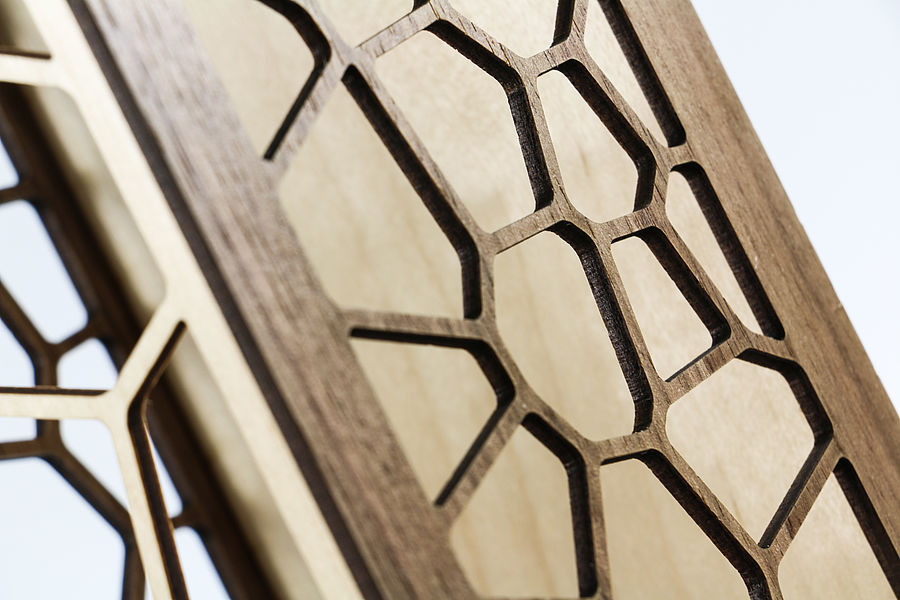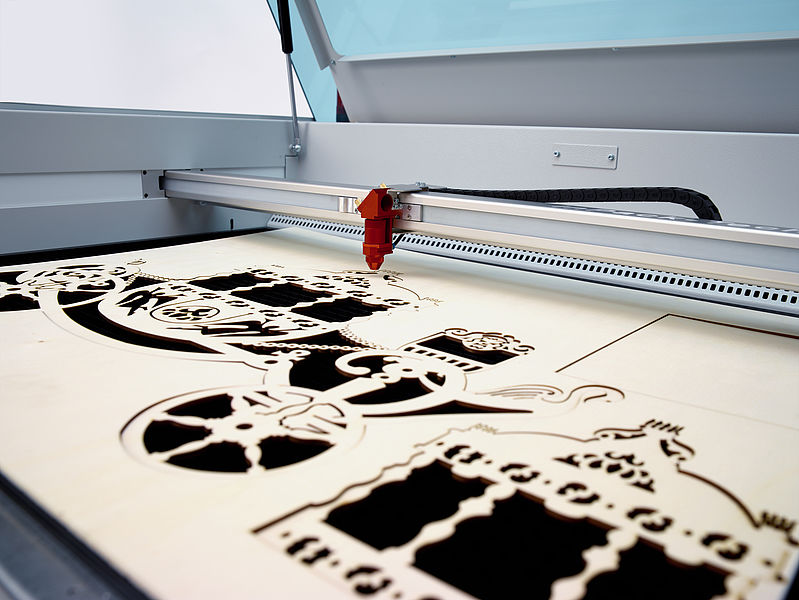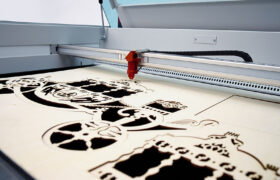Laser cutting has become a widely used process for cutting a variety of materials. Laser cutters provide many benefits such as high accuracy, improved efficiency, and broad capabilities. Below is an explanation of how laser cutting works and what materials you can cut with a laser.
Technical explanation of the laser cutting process
During the process of laser cutting, a laser beam makes contact with the material surface and heats it so strongly that it melts or completely vaporizes the material, causing it to seperate. Once the laser beam has completely penetrated the material at one point, the actual cutting process begins. The laser beam path follows the selected geometry, or cutting lines and separates the material in the process. Depending on the application, the use of process gases can positively influence the results.

The advantages of a laser when cutting
There are a number of reasons why laser machines are the best method for cutting, including:
| Suitable for many type of materials | Lasers can cut a broader selection of organic and inorganic materials than any other technology. |
| No post processing is necessary | Laser cutting completely seperates the material, making post processing unnecessary in many cases. It even seals the edges of textiles such as synthetics or carpet, preventing fraying, and creates a perfectly polished acrylic edge in one proces step. This drastically reduces post-processing requirements, such as mechanical sealing or sanding or flame-polishing, depending on the type of material being processed. |
| High accuracy | Using laser technology, you can precisely cut even the finest details. The resulting kerf is barely larger than the laser beam itself. This makes it possible to cut very fine geometries of any shape. In addition, integrated cameras can create registration marks and automatically compensate for the cutting path – even if the original template gets out of alignment, turned or distorted. |
| No tool wear | Due to the contact-less process and a limited number of moving parts, lasers keep wear and tear to a minimum. This also saves money, and reduces downtime associated with maintenance. |
Lasers compared to other cutting methods
Plasma cutting is a thermal fusion cutting process that is frequently used to cut steel, stainless steel and aluminum. Compared to a laser, the lower cut quality, higher energy consumption, increased dust creation and noise emissions are frequently cited as disadvantages. But when cutting any electrically conductive material, plasma cutting is often the technology of choice because of its flexibility.
Compared to mechanical chip removal cutting processes, however, a laser also often has its advantages. The non-contact processing, reduced setup costs, lower contamination and flexibility for processing are just a few of those. Depending on the material and application, every processing method naturally has its advantages, for instance, when cutting multiple samples in a stack at the same time.

What materials can be cut with the laser?
The versatility of materials that can be processed is one of the great advantages of the laser.
You can see the range of possibilities for yourself from the following table.
Plastic |
Miscellanious |
Metal |
|
|---|---|---|---|
| Acrylonitrile butadiene styrene (ABS) | Polyethylene terephthalate (PET) | Wood | Metal foils up to 0.5mm |
| Acrylic/PMMA | Polyimide (PI) | Paper (white) | |
| Rubber | Polyoxymethylene (POM) -i.e. Delrin® | Paper (colored) | |
| Polyamide (PA) | Polypropylene (PP) | Food | |
| Polybutylene terephthalate (PBT) | Polyphenylene sulfide (PPS) | Leather | |
| Polycarbonate (PC) | Polystyrene (PS) | Fabric | |
| Polyethylene (PE) | Polyurethane (PUR) | Cardboard | |
| Polyester (PES) | Foam (PVC free) | Cork | |
